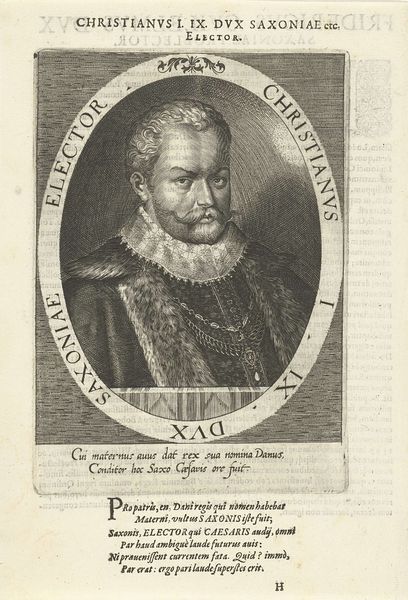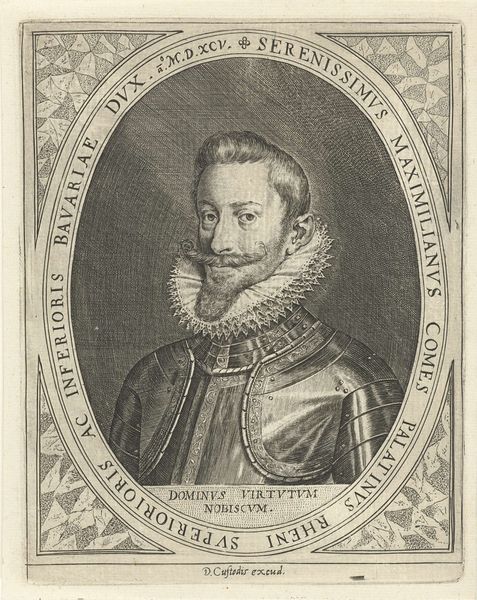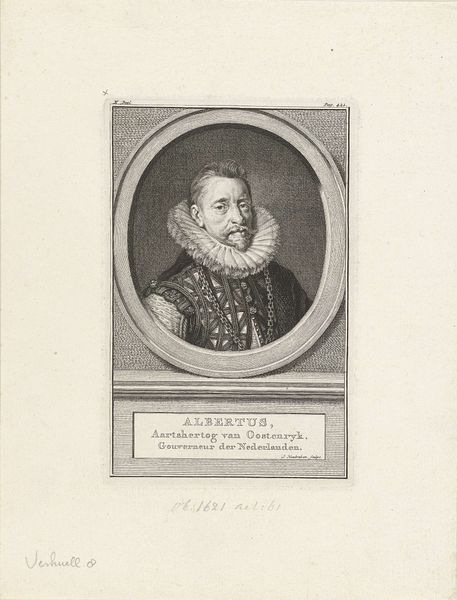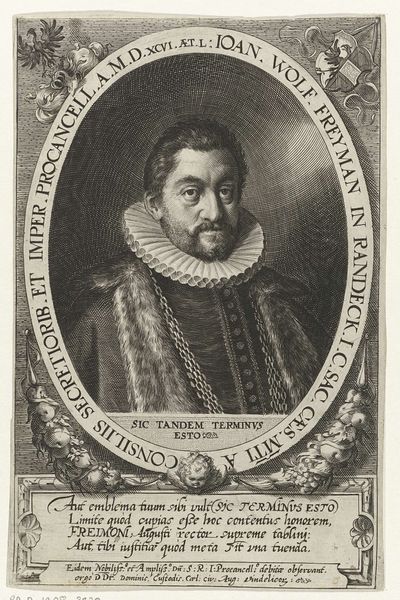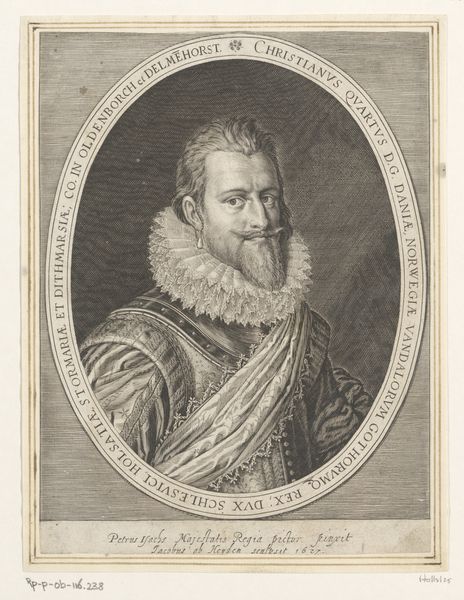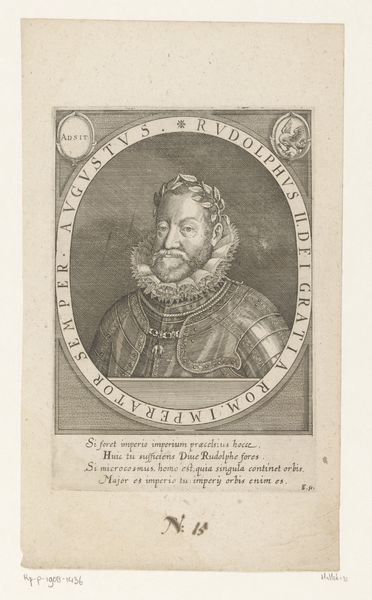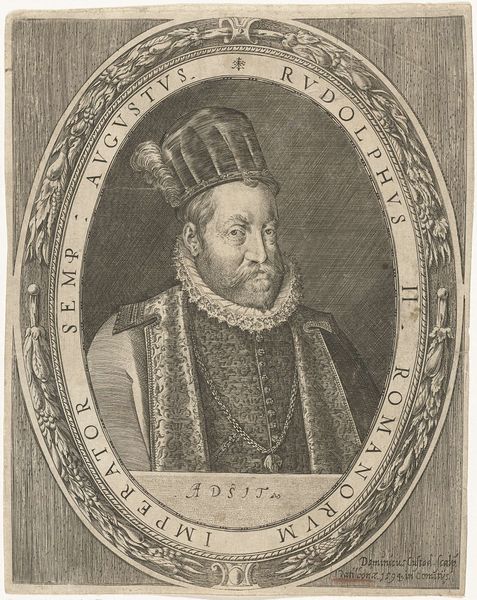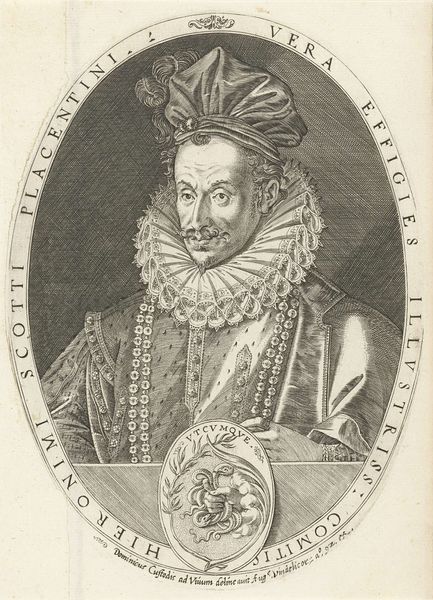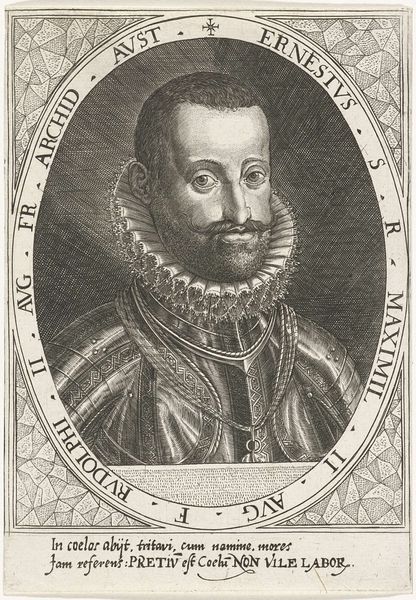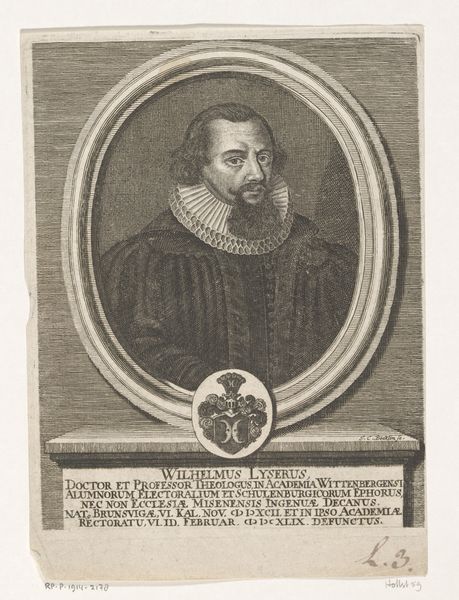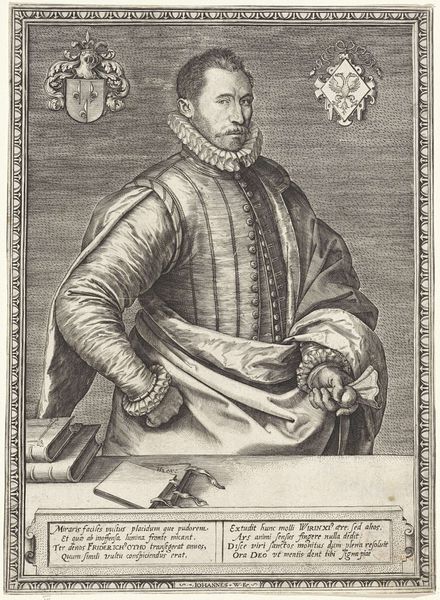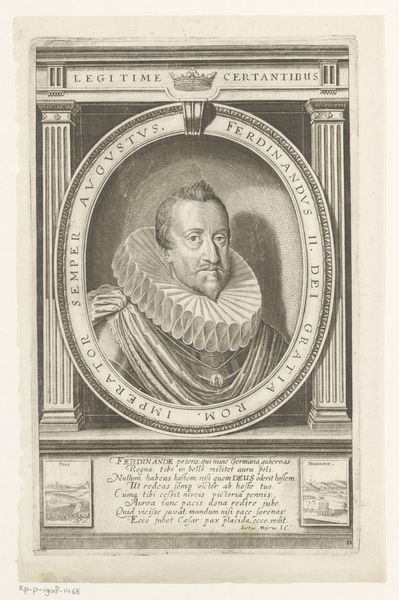
print, engraving
#
portrait
#
baroque
# print
#
old engraving style
#
engraving
Dimensions: height 190 mm, width 120 mm
Copyright: Rijks Museum: Open Domain
Curator: Here we have a striking engraving, "Portret van ridder Matthias Thalmann," dating from around 1600 to 1615. It's currently part of the Rijksmuseum's collection, attributed to Dominicus Custos. Editor: My eye immediately goes to that amazing ruff. It's almost a halo… a very starched, intimidating halo! Gives him an air of unapproachable… stiffness, really. Curator: That ruff is indeed a statement! These types of portraits served as powerful visual representations of status in their time. Custos' engraving would have circulated, solidifying Thalmann’s image within elite circles. Editor: Knowing that changes how I see it. It’s not just a portrait, it’s PR! That explains the unflinching gaze too. He's projecting an image of power, but almost feels a little cold. Look how the lines are etched so precisely. The intention behind such controlled distribution. Curator: Exactly. Printmaking democratized portraiture to some degree, allowing broader access to representations of power. However, prints could also be tools to consolidate authority or celebrate individual achievements within the societal structures of the era. Consider the inscription within the artwork's oval frame and base with text. They give additional hints about Matthias Thalmann. Editor: But in its making, doesn’t the medium shape the message? An engraving can be replicated infinitely – so in theory he will exist forever – or at least until the plate wore out. I like this kind of portraits—the artist had to rely on line alone to suggest value and color, so in essence, you get this raw and reduced essence. Curator: And there’s artistry even in the reduction. The Baroque style, evident here in the detail and ornamentation of the oval frame and Matthias' attire, it's another hint to understand the time, it was an evolution away from earlier portraits toward something more assertive, more dynamic. Editor: Yes! Now it looks less just PR-ish. And this idea that everything is connected socially—like layers you can unpick just by looking closely – you know— I hadn’t realized all this just from an image, and maybe a small, somewhat ordinary in its type. It’s wild! Curator: It reminds us how portraits actively participate in crafting historical narratives, in consolidating political power, and now, offering invaluable research sources about dress and social values of the period. Editor: Okay, next portrait! Let's find another stuffed shirt hiding secrets behind an ironed ruff.
Comments
No comments
Be the first to comment and join the conversation on the ultimate creative platform.
